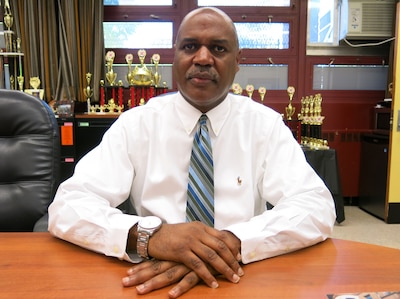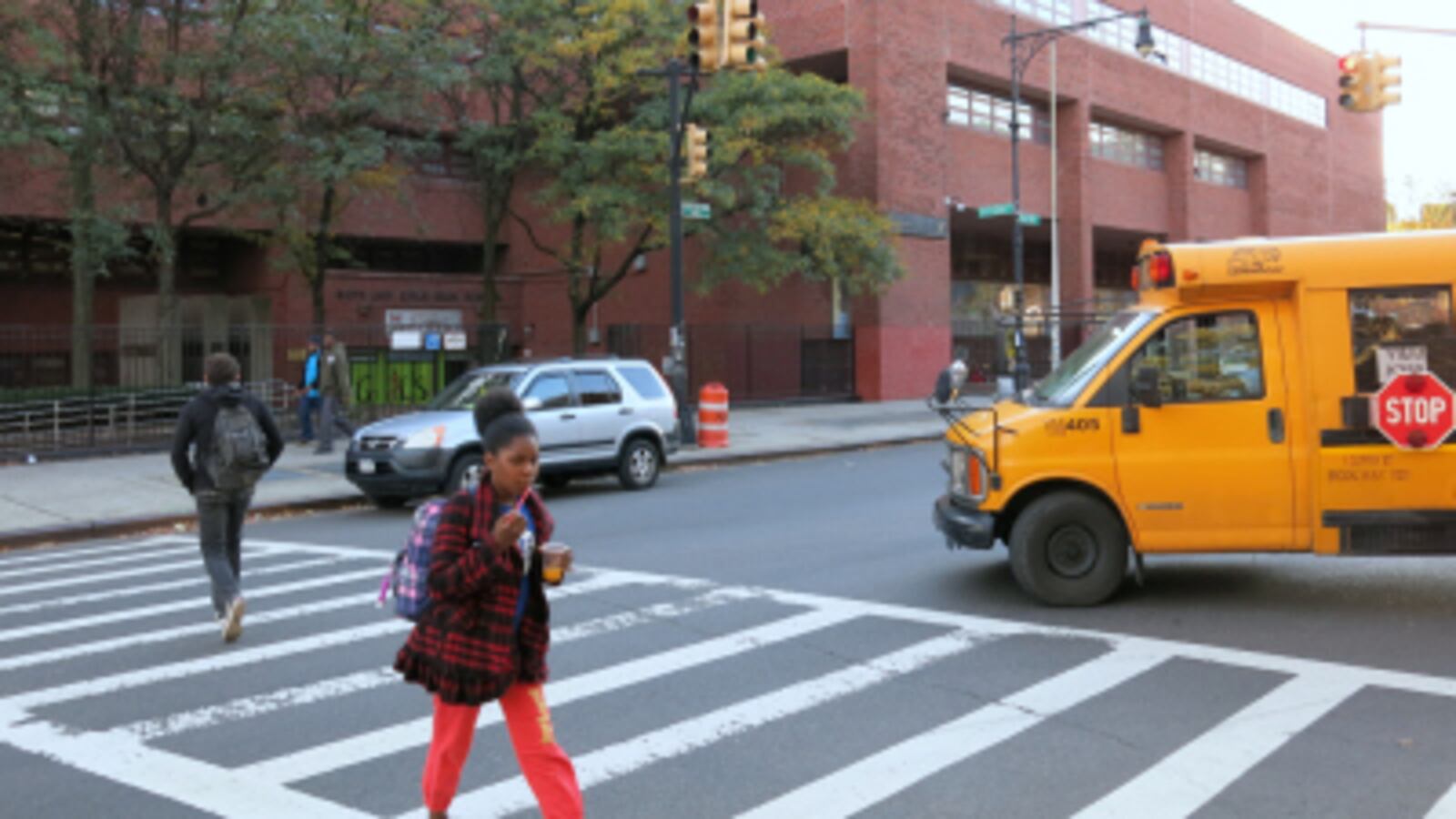Before the start of a meeting at Boys and Girls High School last month, an education department employee made a request that soon led to a tense showdown, several attendees said.
The woman wanted the members of the school’s leadership team to sign a document certifying that they had helped develop an improvement plan for the long-struggling school. A student and the parent association president signed the form, according to multiple members of the team, which includes the principal, staffers, parents, and two students from the Bedford-Stuyvesant school. But several others declined, saying later that they had played little role in creating the plan and had not seen an updated edition after giving feedback on a draft version over the summer.
Once the meeting started, Bernard Gassaway, the school’s outspoken principal who has since resigned, refused to sign the document. Those who already had signed asked to retract their signatures, insisting they had been misled. (The student, Calvin Brown, Jr., later said he thought the form was a sign-in sheet.) The employee, Aurora Brice, angrily asserted that she had misled no one, though another department official who was present agreed to tear up the document.
But the whole debate was largely beside the point: Although the leadership team did not know it, the city had already submitted a final version of the plan to the state before that meeting even took place. Several team members said they only learned that the plan had been finalized and filed when told by Chalkbeat last week, and added that they have yet to see the finished version.
Meanwhile, as the city appointed a new principal to replace Gassaway, officials did not meet the with school leadership team — even though city regulations say those teams must be consulted before a new principal is hired.
“Nobody’s informing us,” Brown, a 17-year-old senior at Boys and Girls, said at the team’s most recent meeting. “Why weren’t any of the teachers, the parents, the students involved in the decision making?”
The city’s interactions with the school leadership team expose the tension between Fariña’s need to intervene at struggling schools like Boys and Girls, which is in such dire shape that the state has labeled it as “out of time,” and her ongoing emphasis on collaboration and empowering educators and parents. It also underscores the challenge the education department faced when working with a principal who happened to be the agency’s loudest internal critic and a leadership team that was closely aligned with him.
The team’s frustration with being given limited information about the city’s plan for their school, meanwhile, comes as other critics are making a similar complaint. They note that even as officials start to take action at some struggling schools, they still have not revealed a system-wide strategy for improving troubled schools, leaving educators largely in the dark more than seven weeks into the school year.
Pedro Noguera, an education professor at New York University, said that while “it’s always good to engage” with school communities when making important decisions, the education department is ultimately responsible for the fate of Boys and Girls and justified in taking steps on its own to improve it.
He also said few districts in the country have effective plans for turning around troubled schools, and added that Fariña has essentially had to create her plan from scratch since the previous administration often opted to close the worst-off schools rather than fix them. Still, he said it is “troubling” that she has still not announced her plan when so many floundering schools require urgent attention.
“Schools can’t tread water indefinitely,” he said.

In a recent interview with Education Week, Fariña said the city has been working with many struggling schools since the summer. Calling herself the “queen of urgency,” she added that she will release an “extremely detailed” plan for such schools soon.
“We are taking a thoughtful approach, developing new solutions and reinventing our entire playbook to most effectively support schools and ensure better student outcomes,” Department of Education spokeswoman Devora Kaye said in a statement to Chalkbeat. “The stakes couldn’t be higher for our students, and it’s worth the time to get it right.”
Gassaway, who presided over Boys and Girls as it earned three straight F’s on its annual school-progress reports, said officials showed him their plan for the school in July after he spoke out about a lack of transparency. One part of the plan was to stop new students from being sent to the school mid-year — a policy change Gassaway had long lobbied for. But even then Gassaway was not satisfied, arguing that he still should have the ability to recruit new students during the year.
The leadership team also saw the plan over the summer and suggested some additions, such as more guidance counselors and teacher training, members said. But they said they did not help create it.
Department officials “just put down what they wanted and expected us to go along with it,” one teacher said.
City rules stipulate that each school’s leadership team must create an annual school-improvement plan, which is filed with the state. In the case of Boys and Girls, the city-made improvement plan is standing in for the leadership team’s plan, officials said, even though the team did not sign off on the city’s plan. Kaye, the department spokeswoman, said the school team was consulted.
If Gassaway complicated the city’s interactions with the school leadership team, little appears to have changed since his departure.
Officials did not consult the team when they hired Michael Wiltshire, the longtime principal of a Crown Heights school, to replace Gassaway. Team members discovered that a new principal had been appointed only after reading about it in the newspaper, several said. However, during the hiring process, Fariña did meet with the school’s politically connected advisory board, which includes elected officials, civic leaders, and alumni.
Caster Hall, the school’s parent association president and Gassaway’s brother, emailed Fariña last Monday to complain about her “lack of communication” with the leadership team. He asked why she had met with the advisory board and not the team and why she is “disrespecting parents and students of BGHS.”
Fariña promptly emailed back, saying, “There will be a meeting this week to explain steps going forward.” Fariña visited the school that day to confer with the new principal, but she still has not met with the school leadership team, Hall said.


